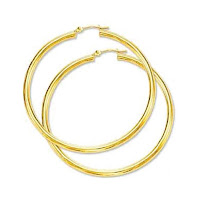 |
| Oyster nets on a pearl farm in Tahiti. |
Akoya. Tahitian. South Sea. Oh my... Pearls come into the world naturally radiant, unlike other
gemstones which are cut and polished to reveal their beauty.
A cultured pearl is the beautiful outcome of
a mollusk's reaction to adversity.
Nacre, the smooth crystalline substance the mollusk secretes to cover a
foreign irritant in its shell, accumulates layer upon layer-- resulting in one
of Mother Nature's miracles.
Pearl quality is determined by luster, surface, shape, color
and size. Obviously, it's best to
consult a reputable, professional jeweler to guide you in making a choice, but
let's get you started by breaking down types of pearls--
 |
| Classic Akoya pearls. |
Akoya
Complimenting a wedding gown.
Punctuating a business suit.
Finishing formal wear.
Akoya pearls are the timeless white strand we
all think of when we hear "pearls," but they are also available in a
golden hue.
Generally round, Akoyas are
known for their intense brilliant luster. Cultivated in Japan, China and
Vietnam, their size is usually in the 3-10mm range.
 |
| Gorgeous South Sea pearls |
Worn by sophisticated women, South Sea pearls make a
statement of success. To reach their
exceptional size of 8-18+mm, they grow for years inside the world's largest
oysters (the silver-lipped Pinctada maxima) in the sheltered bays of Australia,
Indonesia, Myanmar and the Philippines. Often it takes years more to complete a
well-matched strand of white or golden South Sea pearls.
 |
| Stunning Tahitian pearls. |
Tahitian
Dramatic and mysterious, Tahitian pearls are sexy.
The colors are a natural wonder created by
the black-lipped Pinctada margaritifera pearl oyster, native to the blue
lagoons of French Polynesia, South Pacific, Cook Islands and Fiji.
In blacks and grays, each Tahitian pearl has
its own pistachio, aubergine or blue iridescence-- giving it a unique
beauty.
Size is usually in the 8-17mm
range.
 |
| Today's Freshwater pearls. |
Freshwater
Today, women create their own trademark style by layering
Freshwater pearls which offer a great variety of shapes beyond round such as
coin, seed, rice, baroque, ringed...
Grown in the United States, Japan and China, Freshwater pearls offer a
full color palette including pink, orange, lavender and white. And they are
generally available in 1-14mm sizes. Although the most affordable cultured
pearl, quality Freshwater pearls start with the smallest bead and accumulate
the thickest nacre. Thicker nacre gives greater dimension to the pearl's luster
because of the depth through which light can refract.
 |
| Scenic Polynesian pearl farm life. |
Regardless of color, pearls are green.
Requiring pristine conditions to cultivate
these beauties, pearl farms have zero negative ecological impact on the Earth's
waters.
Furthermore, the pearl industry
provides thousands of jobs enabling local farmers, sorters, stringers to
support their families.
So in addition
to their beauty, they're a great choice for socially responsible consumers.
Thanks to Cultured Pearl Association of America, Inc. for some of this info and Imperial Pearl for photos.


 #11 - Dress/Work Watch
#11 - Dress/Work Watch





















